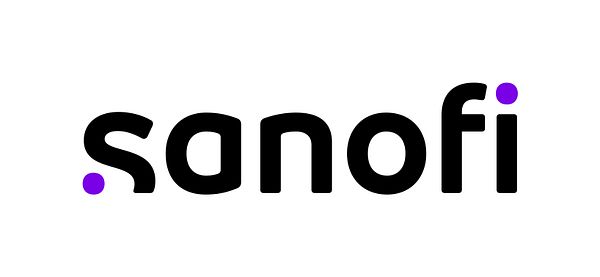Pressmeddelande -
DATA AT EASD SUGGESTS BETTER GLYCAEMIC CONTROL POSSIBLE USING INSULIN GLARGINE OR INSULIN GLULISINE IN TYPE 2 DIABETES
Studies show impact of enforced titration of Lantus® (insulin glargine) on reducing HbA1C levels, and Apidra® (insulin glulisine) on postprandial glucose control in patients with type 2 diabetes
Athens September 14th, 2005: Data presented at the 41st Annual Meeting of the European Association for the Study of Diabetes (EASD), Athens show that a strictly enforced titration schedule with intensive monitoring of Lantus® (insulin glargine) helps more patients achieve HbA1C levels under 7%.1 Further data at EASD showed that patients with type 2 diabetes who are well-controlled on intensive conventional insulin therapy (ICT) with NPH insulin further improve their glycaemic control when treated with the 24-hour basal insulin analog Lantus® (insulin glargine [rDNA origin] injection, sanofi-aventis).2
Findings from a separate study using Apidra® (insulin glulisine), showed that people with type 2 diabetes receiving Apidra® as well as NPH insulin achieve better postprandial glucose control compared to those receiving regular human insulin (RHI) with fewer nocturnal hypoglycaemic episodes.3
Enforced titration of insulin achieves results
The ongoing APOLLO study, is a trial of 418 patients with type 2 diabetes poorly controlled on oral antidiabetic agents (OADs) and compares the effect of therapy with OADs plus Lantus® (once daily), to OADs plus prandial insulin lispro (three times daily). These results, presented at EASD, were an analysis of blinded data from 124 patients who have completed the study. In these patients it showed that a mean HbA1C level of 6.76% is achievable when using an enforced titration schedule with intensive monitoring of insulin.1 Both treatments were similarly well tolerated.
These data in over a quarter of the study population indicate that ongoing monitoring of blood glucose levels and titrating the dose of insulin helps patients to achieve the goal of HbA1C levels under 7%, commented Dr Thomas Linn of the Clinical Research Unit, Justus Liebig University, Giessen, Germany, one of the investigators in the study.
Well-controlled patients derive benefit from switch to Lantus®
Another study presented at EASD found that patients who transferred from intensive conventional insulin therapy (ICT) with NPH insulin to Lantus® further improved their glycaemic control without any increase in hypoglycaemia. The SAFIR study looked at 367 patients with type 2 diabetes with a mean HbA1C under 7% and well controlled on ICT and treated them with Lantus® over a 10 week period.2
The study showed that patients treated with Lantus® saw a decrease in their mean HbA1C levels regardless of the number of NPH injections they received in their previous treatment. Patients previously receiving NPH insulin once daily had their mean HbA1C decreased from 6.87% to 6.66% (p less than 0.001), twice daily or more saw their mean HbA1C reduced from 6.95% to 6.69% (p less than 0.001) and 7.25% to 6.89% (p less than 0.177) respectively.2
In addition, fasting blood glucose (FBG) levels were statistically significantly reduced from 7.7-7.1 mmol/L (p less than 0.001) in previously once daily NPH insulin patients, 7.9-7.3mmol/L (p less than 0.001) in twice daily and 8.6-7.8mmol/L in more than twice daily users of NPH insulin following the introduction of Lantus®.2
SAFIR showed that transferring from NPH insulin to Lantus® was safe for patients with no significant differences between the number of hypoglycaemic episodes before and after Lantus® treatment as measured using continuous ambulatory glucose monitoring system (CGMS) and conventional documentation to monitor hypoglycaemia.2
The European Diabetes Policy Group (EDPG)4 and the American Association of Clinical Endocrinologists (AACE), recommend that people with diabetes achieve an HbA1C of under 6.5% for optimal diabetes control.5 The American Diabetes Association recommends that people with diabetes achieve an HbA1C under 7%, although more stringent glycaemic goals (i.e. a normal HbA1C, under 6%) may further reduce complications at the cost of increased risk of hypoglycaemia.6
In clinical practice, however, the majority of patients with type 2 diabetes do not routinely reach treatment targets. According to the National Health and Nutrition Examination Survey (NHANES IV) 1999-2000, only 37% of participants with previously diagnosed diabetes achieved the target HbA1C goal of under 7.0%, and 37.2% of participants were above the take action HbA1C level of greater than 8.0%. These figures did not change significantly from those reported in NHANES III, during the period from 1988 to 1994.7
Postprandial glucose control with Apidra®
The findings of a study of 892 people with type 2 diabetes receiving either Apidra® or regular human insulin (RHI) in combination with NPH insulin were also presented at EASD. Results showed that blood glucose changes associated with meals were significantly lower for those using Apidra® compared to RHI at breakfast, dinner and daily, but were similar at lunch.3
The study showed that prandial glucose changes measured at one hour and two hours after the patients meal were statistically significantly lower in those treated with Apidra® (3.99 vs 4.59 mmol/L respectively) compared to RHI (4.87 vs 6.03 mmol/L respectively).3
When patients were acclimatized to treatment (from month 4 on) the number experiencing one or more episodes of nocturnal hypoglycaemia as well as monthly nocturnal hypoglycaemia rates were both lower in the Apidra® group compared with the RHI group.3 There were no differences in symptomatic hypoglycaemia between the groups.
This study shows that, used in combination with NPH insulin, Apidra® is better at controlling blood glucose concentrations after a meal than regular human insulin. These results are promising as we try to find better ways to help people with diabetes avoid peaks and troughs in their blood glucose levels particularly after meals commented Dr Gerry Rayman, Consultant in Diabetes and Endocrinology at the Ipswich Hospital, UK, and study investigator.
About LANTUS® (insulin glargine [rDNA origin] injection)
LANTUS® is indicated for once-daily subcutaneous administration in the treatment of adult patients with type 2 diabetes mellitus who require basal (long-acting) insulin for the control of hyperglycemia and for adult and pediatric patients (6 years of age and older) with type 1 diabetes mellitus. LANTUS® demonstrates a consistent slow, prolonged absorption and a relatively constant concentration/time profile over 24 hours.
About APIDRA® (insulin glulisine)
APIDRA® (insulin glulisine [rDNA origin]) is human insulin analog that is a rapid-acting, parenteral blood glucose lowering agent. It has been shown to be equipotent to human insulin. One unit of APIDRA® has the same glucose-lowering effect as one unit of regular human insulin. After subcutaneous administration, it has a more rapid onset and shorter duration of action.
About sanofi-aventis
Sanofi-aventis Group is the worlds third largest pharmaceutical company, ranking number one in Europe. Backed by a world-class R&D organization, sanofi-aventis is developing leading positions in seven major therapeutic areas: cardiovascular, thrombosis, oncology, metabolic diseases, central nervous system, internal medicine, and vaccines. The sanofi-aventis Group is listed in Paris (EURONEXT: SAN) and in New York (NYSE: SNY)
The sanofi-aventis Group conducts its business in the United States through its subsidiaries Sanofi-Synthélabo Inc., Aventis Pharmaceuticals Inc. and Sanofi Pasteur Inc.
Forward Looking Statements
This press release contains forward-looking statements as defined in the Private Securities Litigation Reform Act of 1995. Forward-looking statements are statements that are not historical facts. These statements include financial projections and estimates and their underlying assumptions, statements regarding plans, objectives and expectations with respect to future operations, products and services, and statements regarding future performance. Forward-looking statements are generally identified by the words expect, anticipates, believes, intends, estimates, plans and similar expressions. Although sanofi-aventis management believes that the expectations reflected in such forward-looking statements are reasonable, investors are cautioned that forward-looking information and statements are subject to various risks and uncertainties, many of which are difficult to predict and generally beyond the control of sanofi-aventis, that could cause actual results and developments to differ materially from those expressed in, or implied or projected by, the forward-looking information and statements. These risks and uncertainties include those discussed or identified in the public filings with the SEC and the AMF made by sanofi-aventis, including those listed under Risk Factors and Cautionary Statement Regarding Forward-Looking Statements in sanofi-aventis annual report on Form 20-F for the year ended December 31, 2004. Other than as required by applicable law, sanofi-aventis does not undertake any obligation to update or revise any forward-looking information or statements.
References
1. Linn T, Nuber U, Axel M et al. The Role of Titration Enforcement for the Treat-To-Target Concept with Add-on Insulin Therapy in Patients with Type 2 Diabetes. Presented at the 41st Annual Meeting of the European Association for the Study of Diabetes (EASD), Athens, Greece 1015 September, 2005.
2. Richter M, Schiwietz J, Reinhard Z et al. Insulin Glargine Improves Metabolic Parameters in Well Controlled Patients with Type 2 Diabetes Previously on an Intensive Conventional Therapy (ICT) with NPH Insulin. Presented at the 41st Annual Meeting of the European Association for the Study of Diabetes (EASD), Athens, Greece 1015 September, 2005.
3. Rayman G, Souhami E. Insulin glulisine provides superior postprandial glucose control with less nocturnal hypoglycaemia compared with regular human insulin in subjects with type 2 diabetes. Presented at the 41st Annual Meeting of the European Association for the Study of Diabetes (EASD), Athens, Greece 1015 September, 2005
4. European Diabetes Policy Group, Diabetic Medicine 1999;16:716-30
5. American Association of Clinical Endocrinologists. Medical Guidelines for the Management of Diabetes Mellitus: The AACE System of Intensive Diabetes Self-Management2002 Update. Endocrine Pract (2002) 8 (Suppl. 1): 40-82)
6. American Diabetes Association. Standards of medical care in diabetes. Diabetes Care 2005; 28 (Suppl 1): S5S36
7. Saydah SH, Fradkin J, Cowie CC. Poor control of risk factors for vascular disease among adults with previously diagnosed diabetes. JAMA. 2004 Jan 21;291(3):335-42


